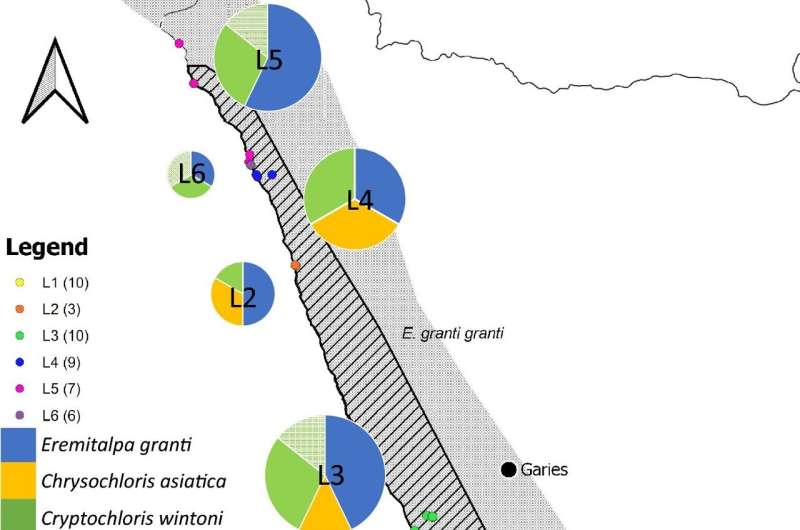November 29, 2023 report
This article has been reviewed according to Science X's editorial process and policies. Editors have highlighted the following attributes while ensuring the content's credibility:
fact-checked
peer-reviewed publication
trusted source
proofread
Researchers find evidence of golden mole species thought to be extinct

A team of zoologists and wildlife managers at the Endangered Wildlife Trust, in South Africa, working with a colleague from Stellenbosch University, another with South Africa's Department of Agriculture, and a third from the University of Pretoria, has found DNA evidence of a golden mole thought to be extinct. In their study, published in the journal Biodiversity and Conservation, the group used two techniques to find evidence of the mole.
The De Winton's golden mole has been considered extinct since the late 1930s, though its existence has always been difficult to prove. Not only does it spend most of its time underground, but it has extremely good hearing and vibration sensing and is notoriously shy. It was known to live in dunes along sandy shores and shrublands. Also, as its name suggests, it has a gold coat—it is also blind and was only known to have lived along South Africa's shoreline. Past attempts to find evidence of its existence have come up empty. For this new effort, the research team took a new approach—using sniffer dogs and eDNA.
Normally, sniffer dogs must be trained on the scent of known quarry. To get around this problem, the researchers trained the dogs to sniff out three other known species of the mole that also live in the area. They took the dogs into the field and got to work, finding multiple instances of known moles. But then, the team came across mole tracks and burrows that the dogs could not identify—a strong hint they may have found their elusive mole.
The team collected more than 100 soil samples, which they took back to their lab for genetic testing. They used techniques developed to find DNA in the environment left behind by a given species—the results are called eDNA. Testing showed four moles living in the area; three that were known and one that was not. The team then compared the unknown DNA with a gene sequence from a De Winton's golden mole in a museum collection and found a match—proof that the mole is not extinct after all.
More information: Samantha Mynhardt et al, Environmental DNA from soil reveals the presence of a "lost" Afrotherian species, Biodiversity and Conservation (2023). DOI: 10.1007/s10531-023-02728-2
Journal information: Biodiversity and Conservation
© 2023 Science X Network





















